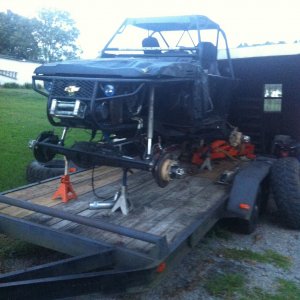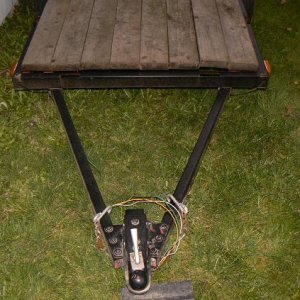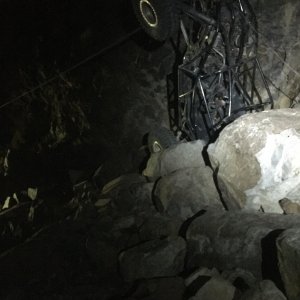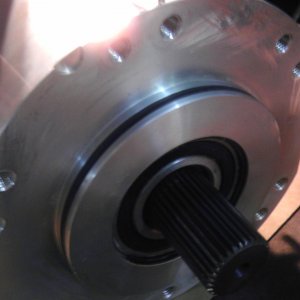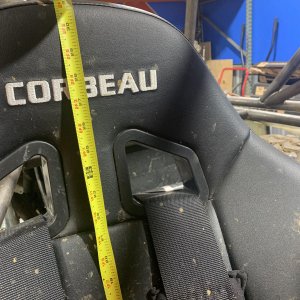When you get the coilover tuned well for great ride, you will most likely need a sway bar to combat body roll.
If you have more sprung mass with light unsprung mass, or shocks mounted to the links in a leading/trailing arm fashion, as well as equal spring rates front and rear, sometimes you can get away without a sway bar. This is done by tuning the dual rate stop nut height in relationship to the dual rate slider.
This is not the norm for most rigs with tons and unequal weight distribution.
Getting the shocks tuned for best ride will allow the body to roll more than it does currently. It's easy to use a sway bar to control this as it is tuneable as well.
The sway bar also controls the timing of articulation front vs rear.
A rear bar makes the front articulate sooner and work more.
A front bar makes the rear suspension articulate sooner and work more.
This is why a sway bar can solve more than one issue, and is completely tuneable independently from the shocks.
That equates to less compromise between body roll and suspension ride quality and compliance.
Generally, put the sway bar on the end of the vehicle with the lighter spring rates to balance the heavier springs and force them to articulate at the same time as the lighter springs.
Cdemart2 is just saying to go ahead and plan for one.
A fulcrum shim is the smaller diameter shim in a flutter stack that puts a gap between shims in a flutter stack.
It allows the larger diameter shim to bend farther allowing more flow sooner before contacting the smaller diameter shim above it.
Ex: comp shim stack. From piston down. Diameter then thickness.
1.6" .010
.900 .012" fulcrum
1.5" .010
1.4" .010
1.25" .010
1.1" .010
.900" .010
.900" .200 back up
1.6" .200 rate plate
I wouldn't immediately up the pressure in the shock to 250. This can play hell with compression valving and tuning as the shock begins to be progressive as the compression ratio increases due to increased n2.
It can be an issue on high loads and stuff valving as you exceed the vapor pressure of the oil as it travels through the piston and valving. For getting started leave it at 200.
A buddy ran emulsions as low as 150 psi on a super light Toyota buggy with no erosion on the piston ports.
It was challenging to get the comp valving light enough, and the coilover was acting like an air shock in compression due to the compression ratio of the shock.
I needed to enlarge the ports but wasn't an option at the time.
Dropped the n2 pressure from 200-175-150 helped to get 2" preload without a spring change. It had zero preload with 200psi.
My point to all that, is yes it's a valid point with emulsions, but don't change too many things at once.
Start with the springs and preload.
Then lighten the rebound.
Then work on compression.
Start with straight pyramid stacks.
Free bleeds.
Then work in a flutter if needed.
Tune dual rate stop nuts, tune sway bar.
Fine tune rebound.
Fine tune compression.
Check piston for port erosion, increase n2 if you notice port erosion.
Emulsions are fine if you are just trail riding. Keep an eye or hand on temps. If you notice the shocks getting hot (200*) you are hot enough to have fade.
This is when the fluid has thinned out due to temp increase, and it feels like both rebound and compression valving has gotten significantly lighter(faster).
This shows you are exceeding the working range of an emulsion, and without doubt need a reservoir.
Yes resi shocks are better than emulsion.
But, you can tune an emulsion in about half the time of a resi shock.
A well tuned emulsion is better bang for the buck, and your back, compared to a poorly tuned resi shock on a trail rig.
Generally if you feel the bumps or hits in the steering wheel, that's the front.
If you feel the bump or hit in your butt/back, that's the rear.


